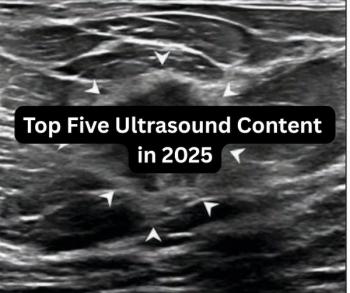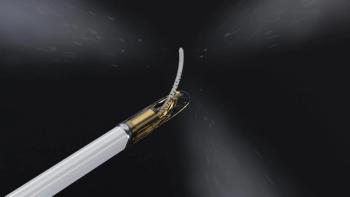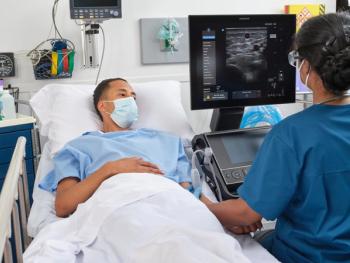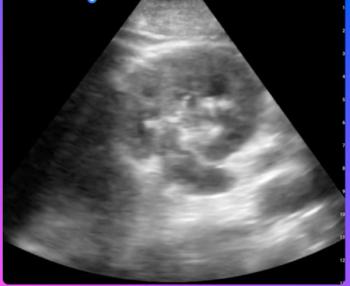
- Diagnostic Imaging Vol 32 No 5
- Volume 32
- Issue 5
Shearwave elastography improves breast lesion Dx
Reducing the number of breast biopsies by better classifying suspicious lesions noninvasively could improve healthcare and cut healthcare costs, laudable goals in the current era of healthcare-and economic-reform.
Reducing the number of breast biopsies by better classifying suspicious lesions noninvasively could improve healthcare and cut healthcare costs, laudable goals in the current era of healthcare-and economic-reform. Shearwave ultrasound elastography, cleared by the FDA in August 2009 as part of SuperSonic Imagine's Aixplorer, may do the trick.
Results from the first phase of a multicenter international clinical trial, released in April, show that data obtained using shearwave elastography, when added to the BI-RADS score for characterizing breast tumors, significantly improves diagnostic specificity and sensitivity, increasing the percentage of correctly classified lesions and improving lesion diagnosis.
The multicenter trial is looking at how the technology might add specificity to an assessment done with conventional B mode imaging, which focuses on morphological features of a mass or other abnormality.
Benign lesions, for example, are typically oriented parallel to the skin, have circumscribed margins, and are oval or macrolobulated in shape. Commonly, malignant masses have irregular shapes, indistinct or spiculated margins, and are “taller than wide.”
“Features of benign and malignant lesions, however, can overlap,” said Dr. Ellen Mendelson, breast imaging section chief at Northwestern Memorial Hospital and site principal investigator for the trial at Northwestern.
The multicenter research is trying to nail down exactly how shearwave elastography might be used to help make the distinction between benign and malignant tissue. In the meantime, current users of the Aixplorer, which has been on the U.S. market for almost a year, can benefit from the improved diagnostic confidence in distinguishing benign and malignant lesions.
“Particularly appealing about this method of elastography is decreased operator dependence and greater likelihood of reproducible results,” Mendelson said.
Other methods of assessing elasticity rely on manual compression of breast tissue with the transducer. In shearwave elastography, no such compression is needed. Data obtained on the first 1000 patients in the 17-center trial suggest that improved characterization is achieved regardless of operator skill.
“The technique is more standardized and reproducible over time,” she said.
Articles in this issue
over 15 years ago
Health reform is one thing, but legislators are not physiciansover 15 years ago
Breast surgeons to tackle screening mammographyover 15 years ago
Tips for relieving workstation strainover 15 years ago
Nothing wrong with techs seeking a 'time out'over 15 years ago
Multidetector CT reveals diverse variety of abdominal herniasover 15 years ago
Watch out if depression doesn't show up on x-rayover 15 years ago
How to get the gain without the pain in shift to 3T MRover 15 years ago
Breast-specific gamma scans monitor chemoover 15 years ago
Cardiac imaging system reduces scan timeover 15 years ago
Pathologist onsite cuts repeat thyroid biopsiesNewsletter
Stay at the forefront of radiology with the Diagnostic Imaging newsletter, delivering the latest news, clinical insights, and imaging advancements for today’s radiologists.




























